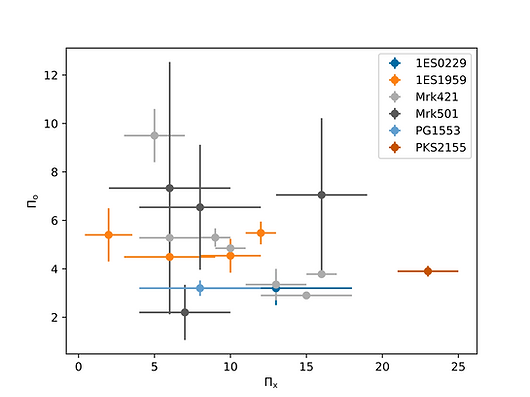Research Projects
I'm an X-ray astronomer interested in active galactic nuclei and X-ray binaries. My research interests lie in the physics of accretion as well as the growth of black holes through time.

Saade et al. 2024b
Binary Supermassive Black Holes
During my PhD I used Chandra and NuSTAR to observe candidate binary supermassive black holes (binary SMBHs) and search for an X-ray excess that has been predicted by theory. I did not find any evidence for X-ray spectral differences between the candidate binary SMBHs and single SMBH AGN, which could mean theoretical models of accreting binary SMBHs are incomplete.
Accretion Geometry
In my work with the IXPE team at NASA's Marshall Space Flight Center I used X-ray polarimetry to help determine the coronal geometry of stellar and supermassive black holes. I found that black holes across the mass scale possessed coronae that were extended in the plane of the accretion disk. This work was featured in the press releases of NASA and USRA.

Saade et al. 2024c

Saade et al. 2022
AGN Duty Cycles
During my work with the NuSTAR team I used NuSTAR to examine nearby X-ray weak AGN to determine if they were heavily obscured or had recently deactivated. I found one AGN, in NGC 3627, that had to have turned off around 80-200 years ago.
Blazar Jets
I have used IXPE to study the X-ray polarimetric properties of high synchrotron peaked blazars and to compare them to their X-ray spectral properties. Surprisingly, there does not seem to be any correlation.

Saade et al. 2025

Gnarini, Saade et al. 2024
Neutron Stars
I worked with the IXPE team to determine the geometry of the corona of the neutron star X-ray binary 4U 1624-49. We found that its coronal geometry is most consistent with an origin in the boundary or spreading layer, which contradicts a previous theory that the corona was an atmosphere of the accretion disk. I've also co-authored IXPE and NuSTAR papers about a pulsar.
XRISM
I am currently working for the first time on a project using XRISM. I am analyzing Cycle 1 observations of the X-ray narrow line region of a Compton-thick AGN.
